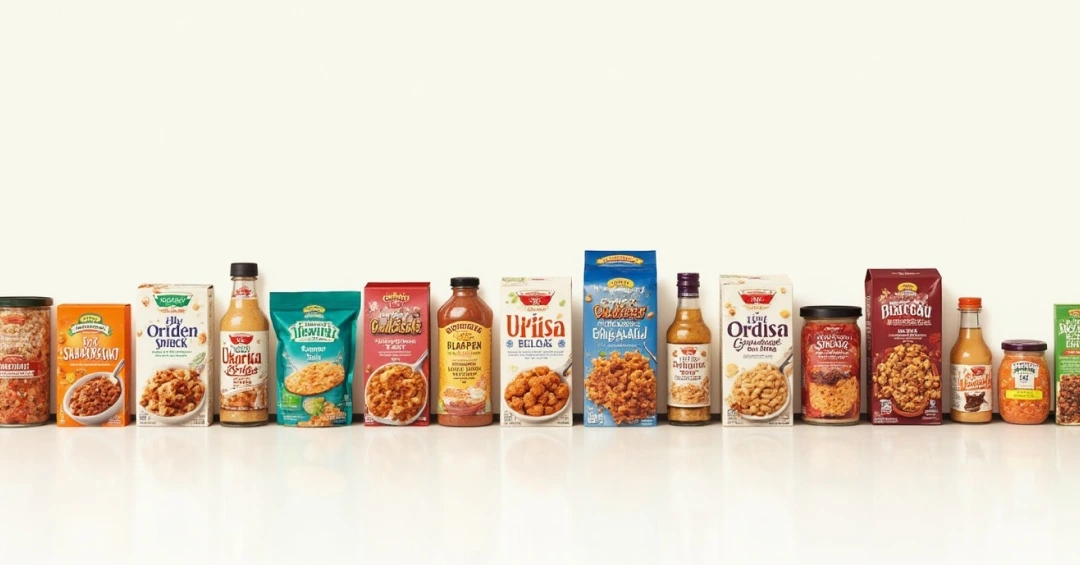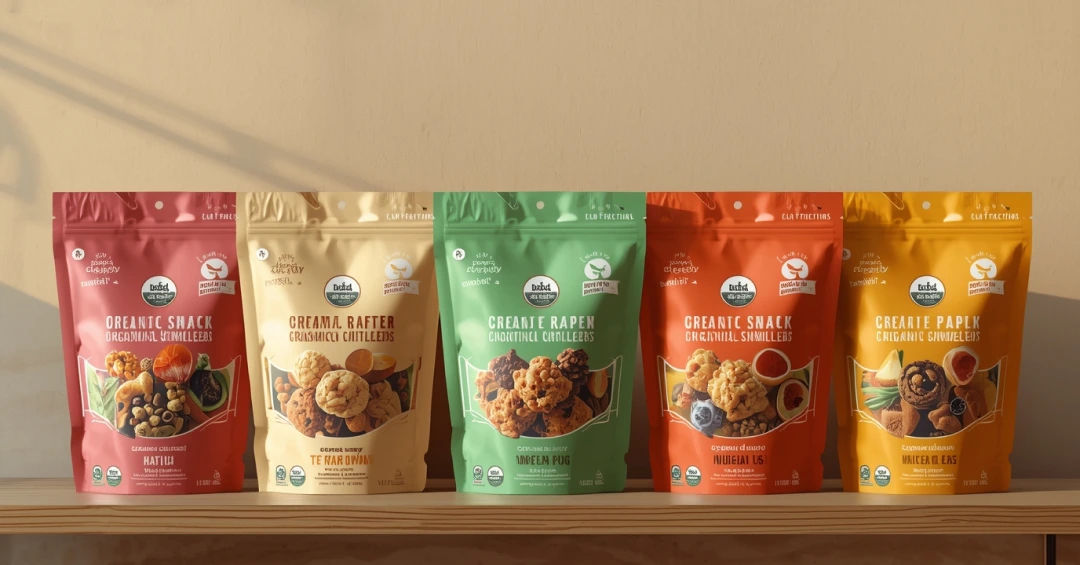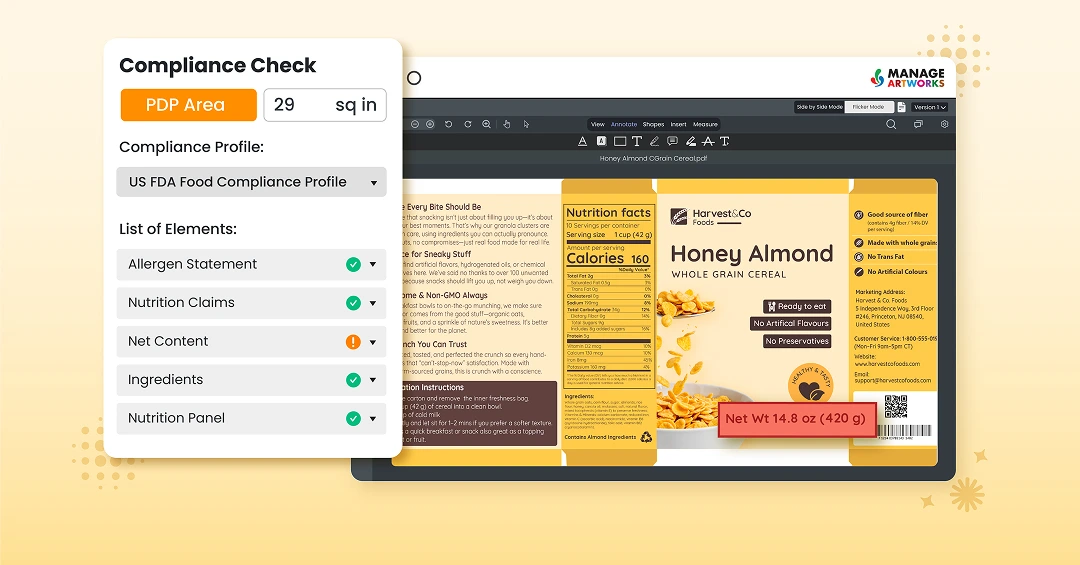Brand consistency becomes complicated when companies manage hundreds of products. Organizations start with strong brand guidelines but face several issues as they enter new markets and introduce new products. Juggling packaging for 150 SKUs across twelve countries doesn’t come easy. Each market brings different compliance regulations, languages, and cultural expectations.
Learn how modern artwork management tools help maintain brand consistency across markets.
What Inconsistency Actually Costs Companies
Brands often underestimate how much brand inconsistency damages their bottom line. They treat it as a marketing issue instead of a business problem. This perspective misses the mark entirely.
Picture a sales team walking into a major retailer meeting. They're presenting their latest product line. The retailer compares current materials to brand assets from last quarter but witnesses differences in logo placement, color values, and messaging hierarchy. The impact?
- The retailer loses trust in brand standards and begins making independent decisions about product presentation. Carefully crafted brand identity becomes whatever interpretation each retailer prefers using.
- Companies lose potential revenue when brand presentation varies across platforms. Large product portfolios amplify these inconsistencies daily, transforming minor design issues into significant financial problems.
Why Multiple SKUs Create Distinct Challenges
Let’s look at the top challenges multiple SKUs create for global brands:
- Multiple product variations: Multi-SKU brands deal with exponential complexity. Every product variation requires unique artwork. Each market demands localized versions since regulation changes affect multiple products simultaneously.
- Multiple languages: Language requirements multiply complications by market count. English packaging might look perfect, but German versions need 40% additional space for identical information. Each language creates new design constraints while preserving brand integrity.
- Regional rules and regulations: Regulatory compliance varies dramatically between regions. European food labeling laws differ completely from FDA requirements, while Asian markets impose specific color restrictions based on cultural associations. Brand guidelines must accommodate these variations without sacrificing visual coherence.
- Communication bottlenecks: Version control fails when teams from multiple regions work together on packaging artwork. Team members use outdated color palettes because they cannot locate the current brand guidelines. These failures multiply across every product, market, and touchpoint.
- Time-zone differences: Design teams operate in EST, regulatory advisors work in CET, and manufacturing partners function in JST. Simple approval processes extend into week-long email exchanges with multiple version attachments.
The Role of Modern Artwork Management Software
Investing in modern artwork management software solves many of the issues that manual processes bring in global markets:
- DAM: Modern tools centralize all artwork copies into a single place, simplifying artwork edits, reviews, and approvals. Digital asset management helps organize, access, and securely manage all digital assets to enhance collaboration and efficiency.
- Version control: Centralized version control eliminates confusion about current files. Every asset maintains clear versioning, approval status, and usage guidelines. When manufacturing partners need logo files, they access identical systems as design teams, with no outdated versions circulating through different folders.
- Automated compliance tracking: Automated compliance checking identifies regulatory violations before production begins. Systems recognize that EU food products require specific allergen warnings. Missing elements get flagged automatically. Teams resolve compliance issues during design instead of discovering problems during manufacturing.
- Standardized brand guidelines: Built-in brand guideline enforcement operates at the creation level. Designers work within templates, incorporating proper spacing, color values, and typography, preventing violations rather than detecting them later.
- Cross-functional collaboration: Modern artwork management tools enable distributed teams to work together efficiently. Teams from various departments and regions review identical files simultaneously. Changes receive automatic tracking and approval workflows advance without time zone delays.
- Language translation support: Modern artwork management tools offer translation management that integrates with design workflows. Translators see the artwork context while working. They understand space constraints and cultural requirements for each market. Final translated materials maintain brand consistency while meeting local needs.
- Periodic audits: AI-enabled audit capabilities allow portfolio assessment against current standards. Systems automatically identify inconsistencies across hundreds of SKUs, allowing companies to fix problems systematically instead of discovering them randomly.
Conclusion
Companies succeeding with large SKU portfolios treat brand consistency as an operational requirement, not a creative preference. They leverage modern artwork management systems to get core branding processes right and scale systematically.
If you operate hundreds of SKUs across global markets, maintaining strength requires systematic approaches that work regardless of complexity, team distribution, or market requirements. Here’s how ManageArtworks helps you master the consistency game!
Frequently Asked Questions
When companies manage hundreds of SKUs, every variation across markets, languages, and regulations creates new artwork versions. Without centralized control, inconsistencies quickly multiply, eroding brand trust and increasing costs.
Inconsistent packaging and messaging can lead to lost retailer trust, reduced shelf presence, regulatory fines, and delayed product launches.
Artwork management platforms centralize assets, enforce brand guidelines, track versions, support translations, and automate compliance. This ensures every SKU, regardless of market or language, meets brand and regulatory standards.





.webp)
















